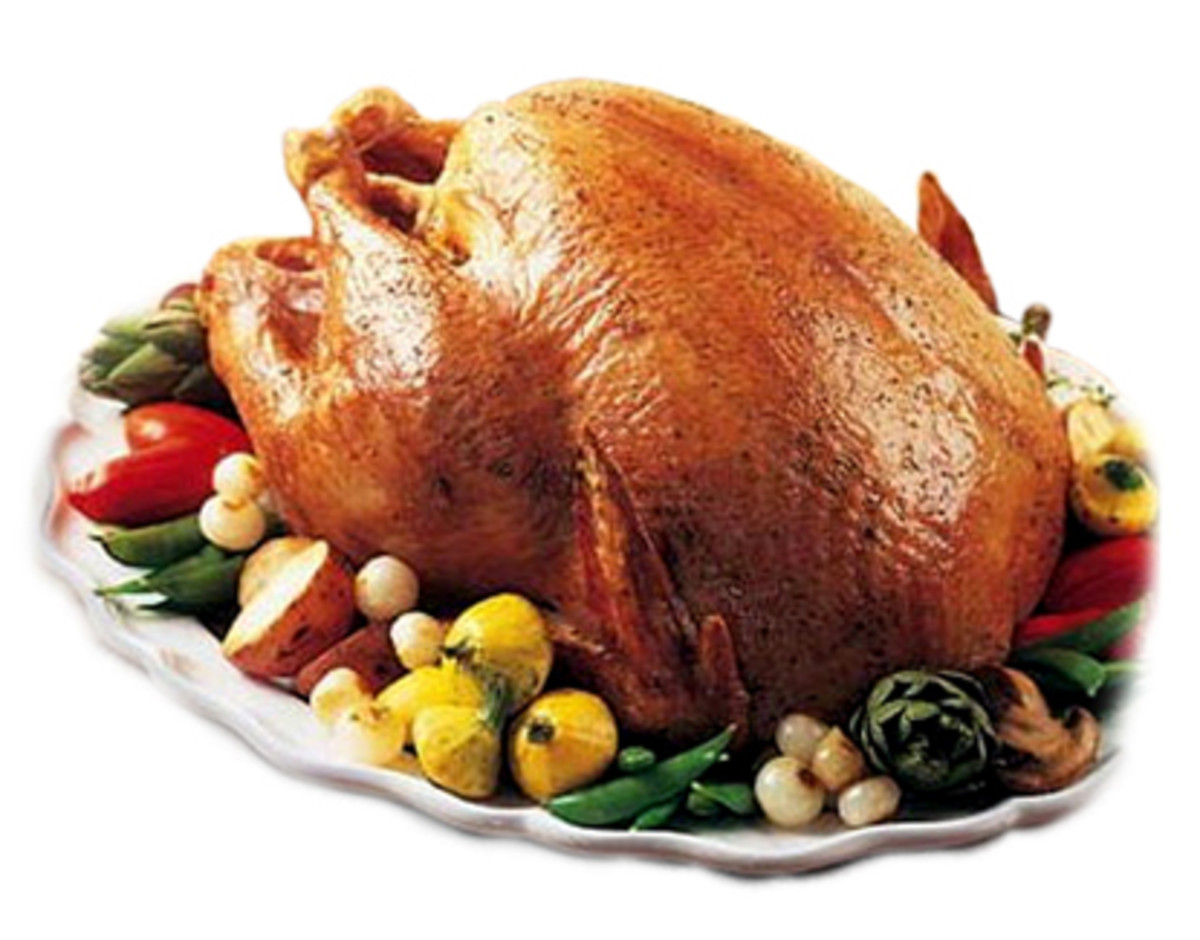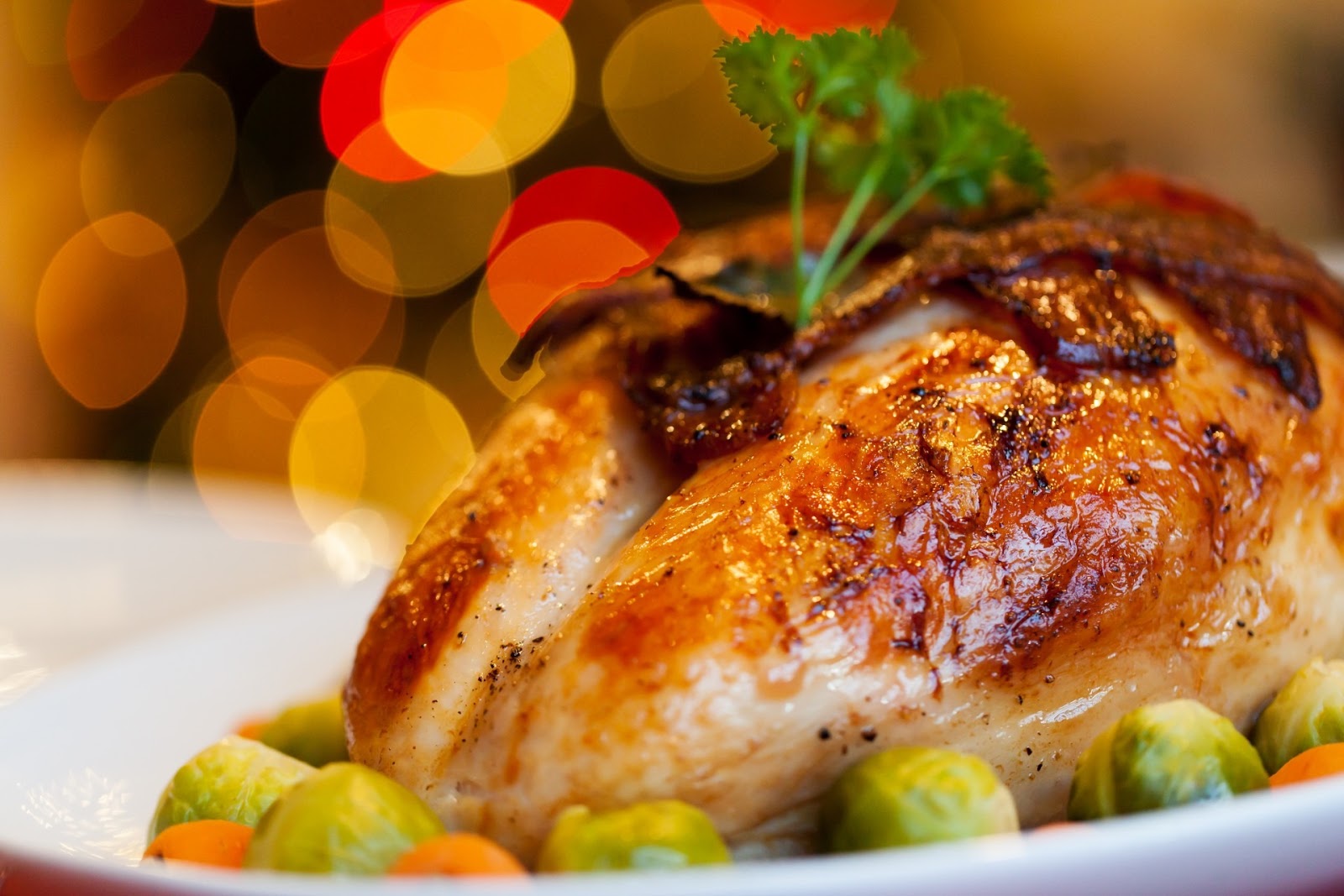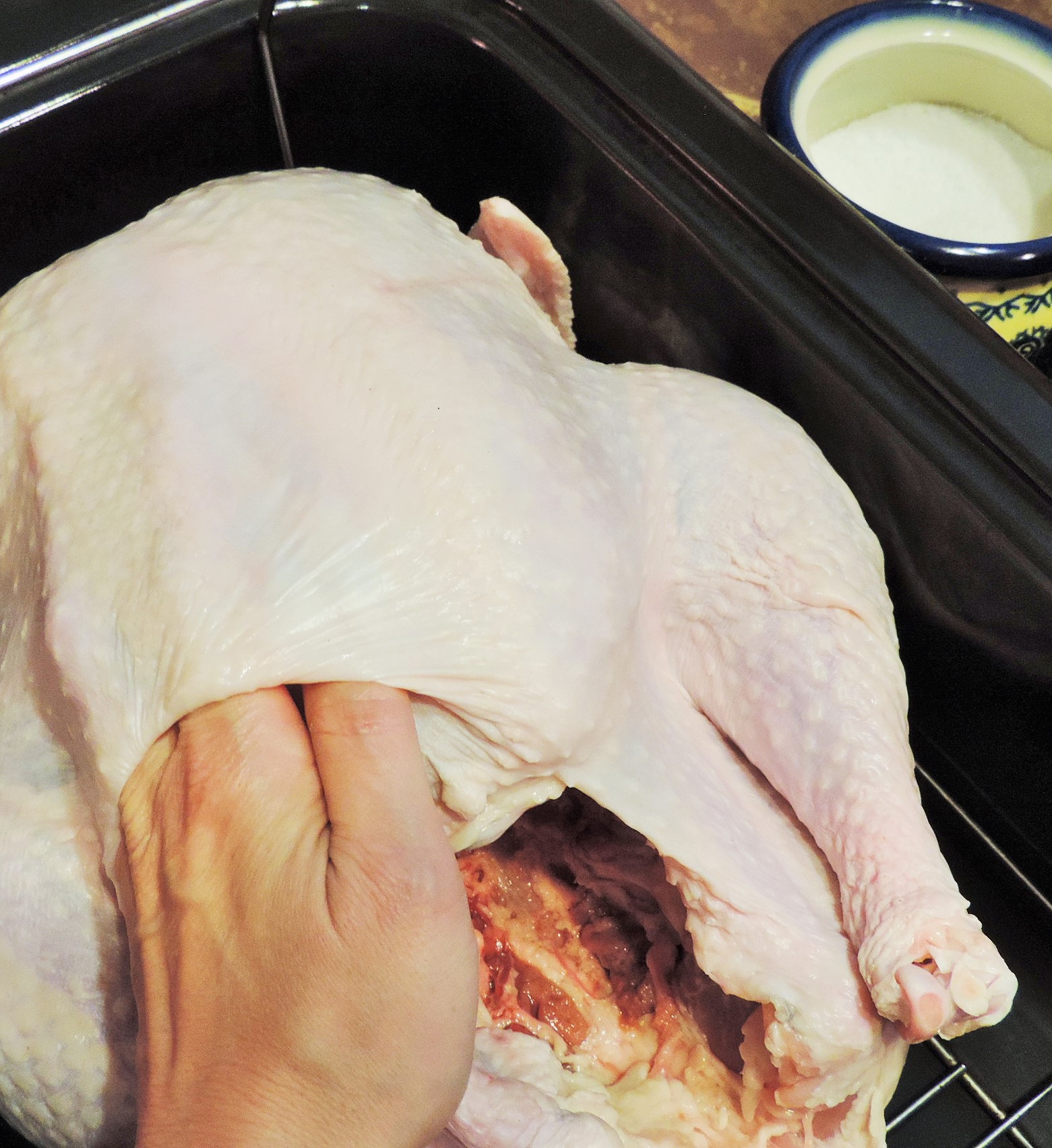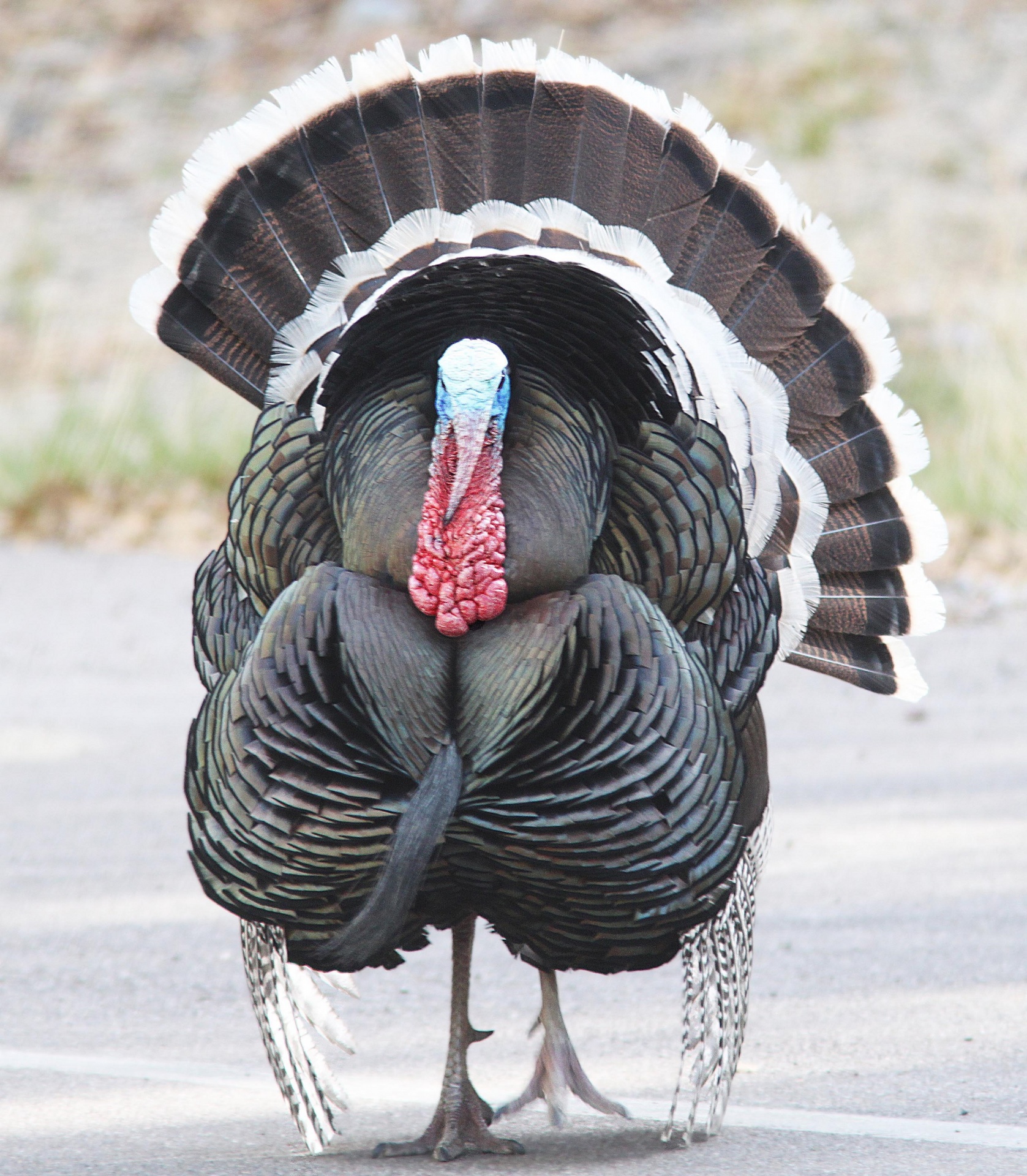
How to Get Crispy Sous Vide Turkey Skin and Chicken Skin
Fresh raw turkey has pale white, off-white, light pink, or cream-colored skin. But when raw turkey loses its freshness, the color of its skin will change. When the color of the skin of the turkey turns darker, then it is spoiled. For instance, if you notice that the pale white or light pink skin has turned grey, you should discard such turkey meat.

Turkey Day 20 Prospect
How to Cook a Turkey. First, thaw the turkey completely. The best way to do this is to put it in the fridge for a few days or in a cooler. If you're short on time, you can defrost it in the microwave or cold water. Never thaw it at room temperature or in hot water. You can brine or season the turkey before you cook it.

FileWild Turkey 159.jpg
Symptoms include yellowish diarrhea, lethargy, and an off-color, sickly-looking black head. Birds may slowly become emaciated. It's almost always fatal for turkeys, unlike other birds, with death rates as high as 70 to 100% in infected flocks. A healthy turkey with clear eyes and bright red wattle.

How to Make Crispy Turkey Skin with Juicy White Meat HubPages
Insert a meat thermometer into the thickest part of the turkey, avoiding contact with bone. The temperature should reach 165°F (74°C) to ensure the meat is fully cooked and safe to eat. 2. Wood Wisdom. Select your wood for smoking based on your desired flavor profile and color outcome.

Wild turkey with bright skin in summer in zoo · Free Stock Photo
Excessive sugar in your rub can result in dark turkey skin due to the combination of caramelizing, burning, and the Maillard effect. When sugar is present in the rub, it starts to caramelize during the smoking process. If the sugar is not properly balanced with other ingredients, it can easily burn and cause the skin to turn black.

The 4.11 Turkey (15 lbs) Penny Pincher Journal
Crispy Turkey Skin Method: Brushed with Oil. Prep time: 5 minutes. Rating: 9/10. About this method: In an article on Popsugar, the author explains that the experts at Butterball recommend brushing a whole bird with a high-heat oil before it goes into the oven.

Juicy Roasted Citrus Turkey, Ghetto Style My Midlife Kitchen
Black Turkey Poult. The Black was recognized by the American Poultry Association in 1874. Their plumage is a lustrous, metallic black with a greenish sheen on top and a dull black under-color. It's undesirable to have a brownish or bronze cast or any white. Poults will often have white or bronze in their feathers but molt into mature plumage.
Eastern Turkey Lifesize Skin Forum
This pigmentation can leave brown or black spots on the skin, even after plucking. Turkeys with white feathers will often have pinfeathers on the carcass as well. However, due to their lighter color, the spots are less noticeable. The dark spots are harmless, and the turkey will still be edible even if you leave them alone.
FileTurkey bird J2.JPG Wikimedia Commons
A: The black spots on raw turkey skin are most likely either "pin feathers" or "turkey blackheads". Pin feathers are small, hard, black projections that are a normal part of the turkey's development. They will eventually fall off as the turkey matures. Turkey blackheads are small, black bumps that can occur on the skin of turkeys.

florallsTurkey by ahmet.erdem Tumblr Pics
The Rio Grande turkey is a subspecies of wild turkey found in the southwestern United States and northern Mexico. It is characterized by its black spots on the breast, wings, and tail. Meleagris gallopavo ssp. merriami: The Merriam's turkey is a subspecies of wild turkey found in the western United States.

Turkey Neck & Saggy Skin Face Restoration Facial Aesthetics
10. Apply a 50/50 mix of kosher salt and black pepper, as well as paprika, garlic powder, and onion powder to the turkey. 11. Preheat your smoker to 325° F and use apple, cherry, or pecan wood. 12. After 1 1/2 hours, check the color of the turkey. Once it is dark, tent the turkey in aluminium foil. 13.

Complete Eastern Turkey skin Forum
Black spots on turkey skin can be a sign of a variety of conditions, including bacterial infections, fungal infections, nutritional deficiencies, and other conditions. The diagnosis of black spots on turkey skin is based on the appearance of the black spots, the history of the turkey, and the results of diagnostic tests.

Today Is My Birthday, Turkish Beauty, Instagram Art, Turkish Actors
When your Heritage Black Turkey arrives, you may notice blue or black spots on the skin. Unlike a commercially bred white turkey, our turkey is dark-plumed. When processed, the pigment from the feathers can extrude into the skin. This does not affect the turkey's flavor, only it's appearance, and it's a trait of an old-world heritage breed.

Dry Brined Turkey with Extra Crispy Skin
Skin of the Black turkey is usually white, as in all turkey varieties, but some writers speak of a yellow tinge to the skin that is not seen in other varieties. This may be influenced by diet, as turkeys on range with access to green feed and corn tend to have a more yellow cast to the skin. The Standard weight is 23 pounds for young toms and.

Wild Turkey Free Stock Photo Public Domain Pictures
Feather remnants: The brown and black spots on the turkey are remnants of feathers left behind after plucking. These spots can be more prominent in turkey breeds with darker feathers. However, they are completely safe to consume. Pinfeathers: Some turkeys may have traces of pinfeathers, which are small, immature feathers that haven't fully grown.

Cappadocia, Turkey Free Stock Photo Public Domain Pictures
Or, the high temperatures cause the wood to burn too hot and produce dirty smoke, in turn making your smoked turkey black. That's why it's essential to keep your smoker below about 350°F. Normally 275°F is a good temperature for smoking turkey, whether it's whole, pre-cooked, broken down, or spatchcocked.